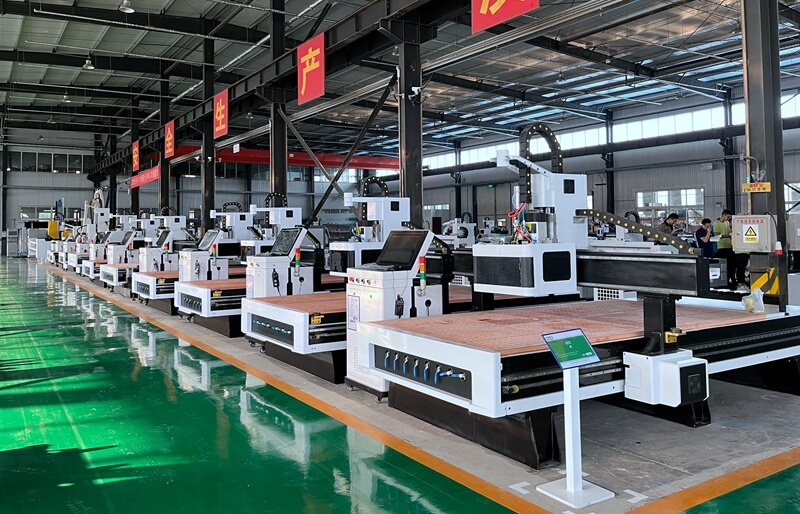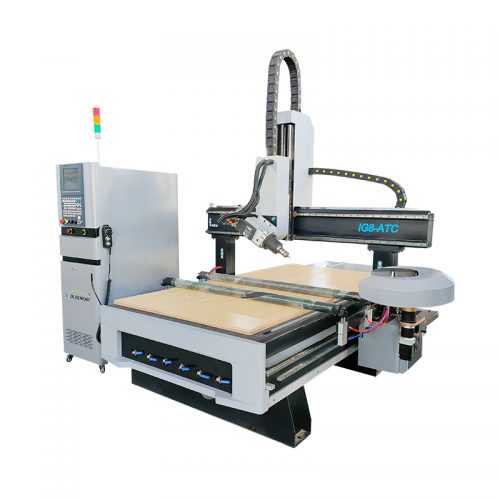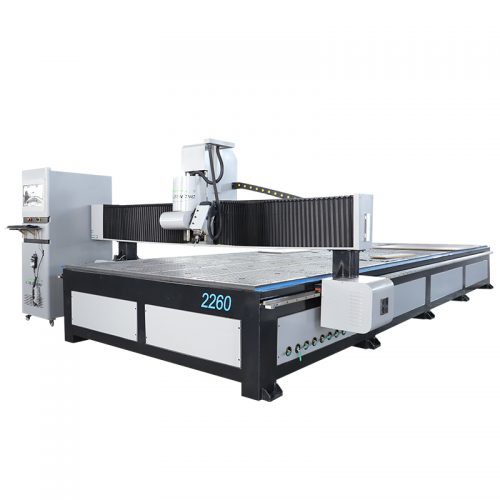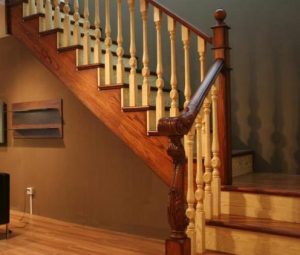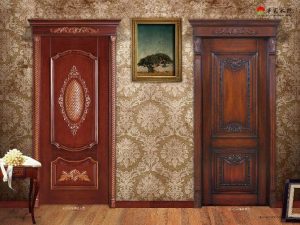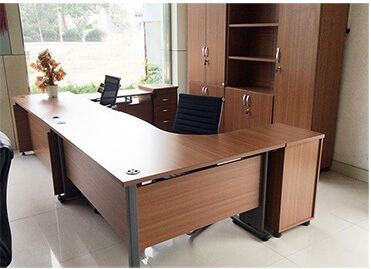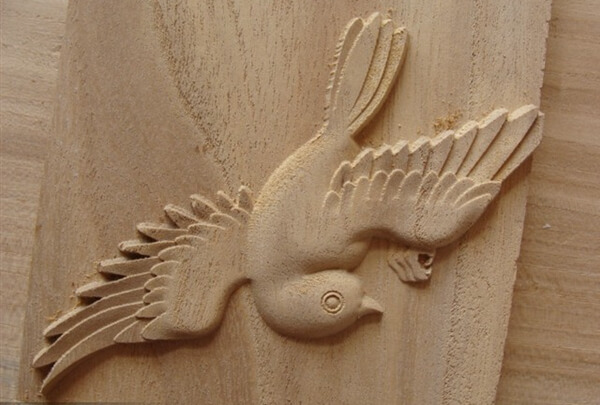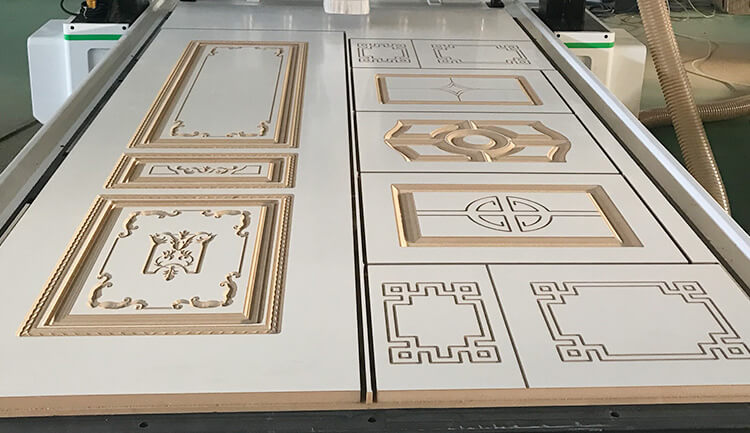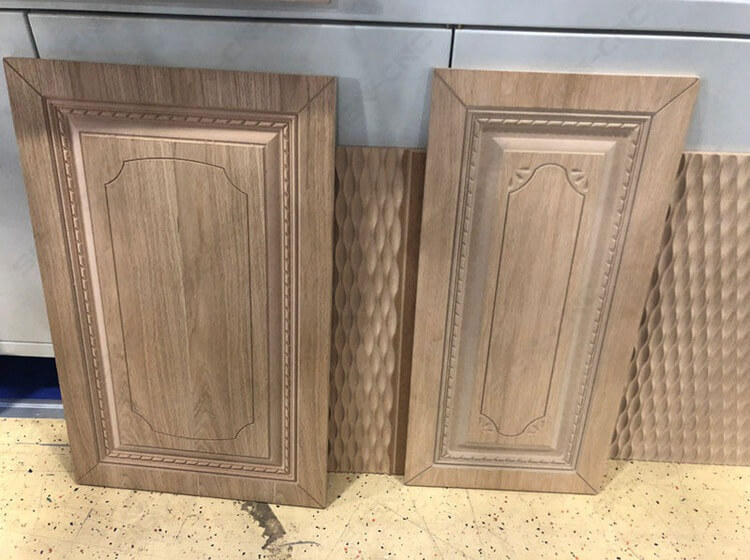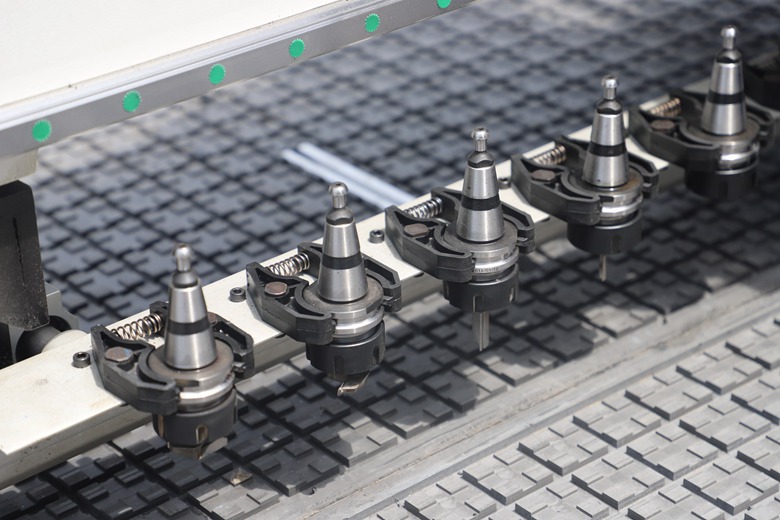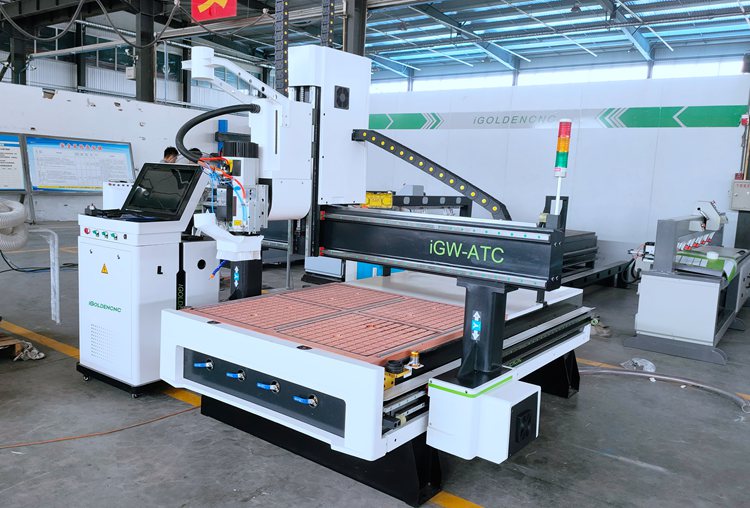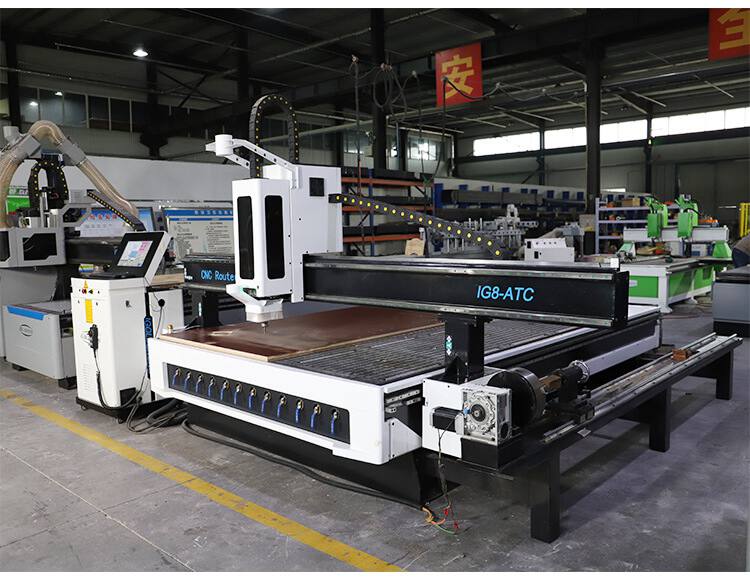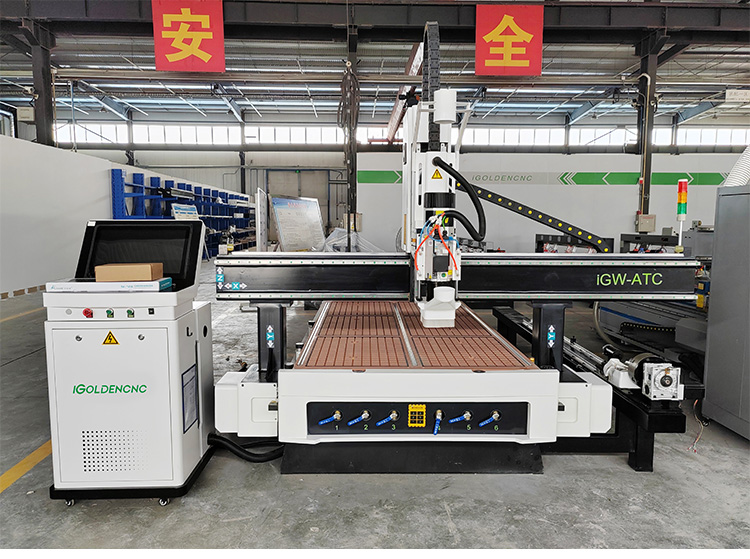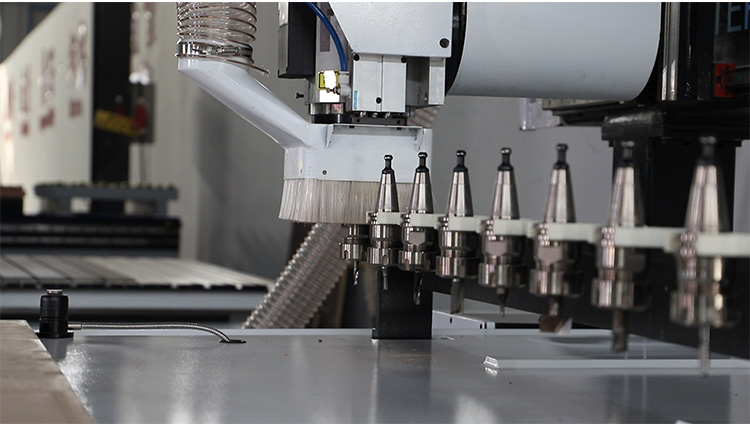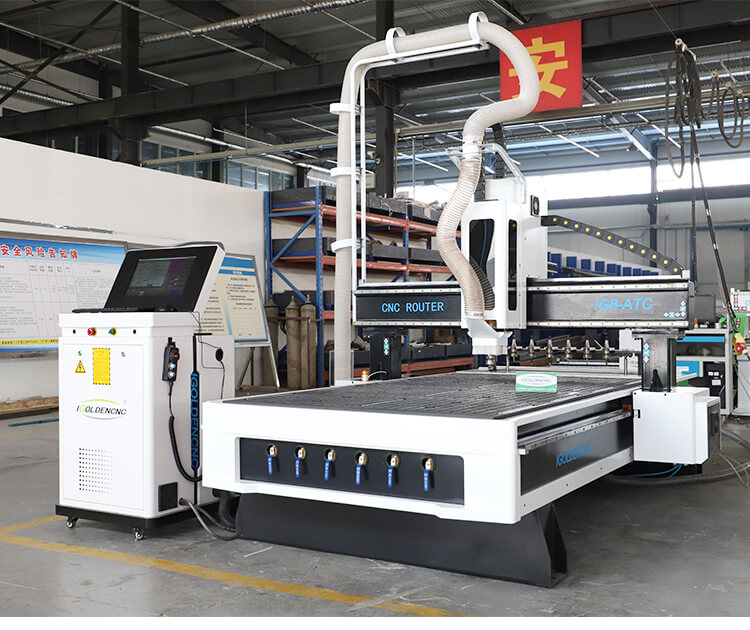ATC CNC Router Applied
These automatic machine tools are mostly used for woodworkers and carpenters to do woodworking in industrial manufacturing, small business, small shop, home business, home shop, school education. Besides, craftsman and hobbyists will also find a computer-controlled wood CNC machine useful.
Here are some of the fields where a CNC wood router will have access:
• Furniture Making: home furniture, art furniture, antique furniture, office furniture, cabinet making, door making, cabinet doors, interior doors, home doors, cupboard doors, table legs, sofa legs, wood spindles, corners, screens, headboards, composite gates, MDF projects, wood crafts, wood arts.
• Advertising.• Die Making.• Hollowing.• Relief Carvings.• Wood Cylinders
.• 3D Woodworking Projects.• Sign Making.• Custom Woodworking Plans.
Frequently Asked Questions
ATC CNC router is the first choice for enterprises with large production volume. It can automatically change the required tools by computer program control without stopping work during processing. And it can complete cutting, hollowing, grooving, punching, milling grooves, milling planes and other different processing.
According to the different tool changing methods, the ATC CNC engraving machine can be subdivided into linear ATC CNC and carousel ATC CNC machines. With the linear tool magazine, you don't need to go to the back of the bed to change tools. And the carousel ATC CNC machine is also one of the most popular type. However, it can only accommodate 20 tools. If the number of tool exceeds 20, it will affect the bearing capacity of the Z axis and the gantry.
In the automatic tool changing system, the device that realizes the transfer and loading and unloading of the tool between the magazine and the spindle is called the tool changer. There are two ways to exchange tools: the relative movement of the magazine and the spindle, and the manipulator. The device that uses the relative movement of the magazine and the spindle to realize the tool exchange must first return the used tool to the magazine when changing the tool, and then take out the new tool from the magazine. The two actions cannot be performed at the same time, and the tool change time longer.
However, the manipulator tool changer can grab and load and unload the bits in the spindle and the magazine at the same time during changing, so the changing time is further shortened. The method of tool exchange using a robot is the most widely used. This is because the manipulator is flexible in changing, fast in action, and simple in structure. The manipulator can complete a series of actions such as grasping - drawing - turning - inserting - returning. In order to prevent the bit from falling, the movable claw of the manipulator is equipped with a self-locking mechanism.
In CNC routers, automatic tool changer (ATC) systems vary in design and operation to meet different needs and production requirements. Here are some common types of instructions:
- Disc Tool Changer: This type features a rotating disc or turntable with tool slots around its circumference, with the tools held in individual slots. When a tool needs to be changed, the disc rotates to position the designated tool in front of the spindle so it can be retrieved.
- Fixed Linear Tool Changer: In a fixed linear tool changer, the tools are arranged linearly along a fixed track. The spindle moves along this path to select the desired tool. This type is commonly used when space is a concern and it provides a linear and predictable tool change sequence.
- Follow-Up Linear Tool Changer: Similar to the fixed linear tool changer, the follow-up linear tool changer also has the characteristics of the linear arrangement of tools. However, in this system, the tool magazine can move with the movement of the spindle. This helps speed tool changes and reduces idle time.
These ATC systems cater to different needs and preferences, and the choice depends on factors such as the number of tools required, the space available in the CNC router, and the required efficiency of the tool-changing process. Each type has its advantages, and selection is usually based on the specific requirements of the machining application.
Application Requirements
Determine the primary materials you will be working with (wood, metal, plastic) and the specific tasks required (cutting, carving, carving). For woodworking you need high precision to account for complex designs, metalworking may require the ruggedness of heavy-duty cutting, and plastics processing may require high-speed capabilities for fine detailing. Determine whether your project involves intricate details, heavy cutting, or a combination of both.
Spindle Power And Speed
Evaluate spindle power in horsepower (HP) and spindle speed in revolutions per minute (RPM). Higher horsepower enables the cutting of dense materials, while variable speeds accommodate different applications and tools.
Tool Capacity And Compatibility
Check the ATC tool magazine capacity. Consider the range of tools you need for your project and ensure compatibility with a variety of tool sizes, shapes, and types. Verify that ATC can integrate seamlessly with your existing tool inventory.
Speed And Accuracy
The accuracy of the machine is evaluated through indicators such as positioning accuracy and repeatability. Additionally, feed rates are analyzed to understand how fast the machine moves during operation. Higher precision and faster feed rates contribute to efficient, precise machining.
Build Quality And Rigidity
Check the machine’s construction materials and design. The sturdy and durable construction helps minimize vibration, ensure stability during cutting, and improve the overall quality of the finished product. Consider factors such as frame material, bed design, and overall machine weight.
Control System
Evaluate the control system user interface for ease of use, programming capabilities, and compatibility with your workflow. Ensure the control system provides the functionality required for tool path optimization, tool change management, and overall machine control.
Work Area Size
Determine the required work area based on the size of a typical project. Consider the physical size of the machine and the maximum material size it can hold. Make sure the work area is sized appropriately for your production needs.
Software Compatibility
Check your CNC milling machine’s compatibility with computer-aided manufacturing (CAM) software. Ensure your machine supports industry-standard file formats and integrates seamlessly with the software you use to design and generate tool paths, ensuring efficient programming and smooth design execution.
Dust Removal System
Evaluate the effectiveness of dust collection systems. A robust system is crucial, especially when working with materials that generate large amounts of dust. An efficient dust collection system maintains a clean work environment, improves air quality, and extends the life of machine components.
Cost And Return On Investment (ROI)
Consider the initial cost of the machine relative to its features, capabilities, and expected return on investment. Evaluate how a machine’s efficiency, accuracy, and automation capabilities can increase productivity and cost savings over time.
Maintenance And Support
Ask about the machine’s maintenance requirements and the availability of technical support. Understand recommended maintenance procedures and evaluate the responsiveness of the manufacturer’s support team. A reliable support system minimizes downtime and ensures prompt assistance when needed.
The cost of an ATC CNC router can vary greatly depending on a variety of factors. These factors include the machine’s specifications, features, brand reputation, build quality and size of the work area. In addition, geography and local market conditions can also affect pricing. Here are some general guidelines:
- Entry-level models: Small and lead-screw ATC CNC routers with limited features start at about $8,000 to $10,000.
- Mid-range models: A standard-sized ATC CNC router with moderate tool capacity and additional features may cost between $15,000 and $30,000.
- High-end models: High-end ATC CNC routers are equipped with advanced features, larger work areas, and powerful spindles, and can cost $60,000 or more. Some industrial-grade models can even exceed $100,000.
It’s worth noting that these are rough estimates and prices may vary based on the following factors:
- Brands And Manufacturers: Well-known and reputable manufacturers may offer pricier machines, but they usually have better build quality, support, and features.
- Size And Work Area: Larger CNC routers with larger work areas tend to be more expensive.
- Tool Capacity And Features: Machines with higher tool capacity and advanced features such as automatic tool measurement, tool breakage detection and dust removal systems may be more expensive.
- Spindle Power And Speed: Machines with more powerful spindles or variable speeds may cost more.
- Control Systems And Software: CNC routers with complex control systems and software compatibility may have a higher price tag.
For accurate and up-to-date pricing, it is recommended to contact the CNC router manufacturer or dealer directly, as prices may change and new models with updated features may be introduced. Additionally, when evaluating the cost of an ATC CNC router based on your specific needs, consider long-term benefits and return on investment.
The high-power automatic tool changer spindle is adopted, with good starting performance and large torque, which can give full play to the advantages of the machine's high speed and higher efficiency. It adopts high-torque servo motor made in Japan, which has the advantages of low noise, high speed and high positioning accuracy. Equipped with a unique tool magazine, you can exchange the required router bits at will. The tool change time only takes a few seconds. The standard tool magazine comes with 8 tools, and a larger capacity tool magazine can be customized.
